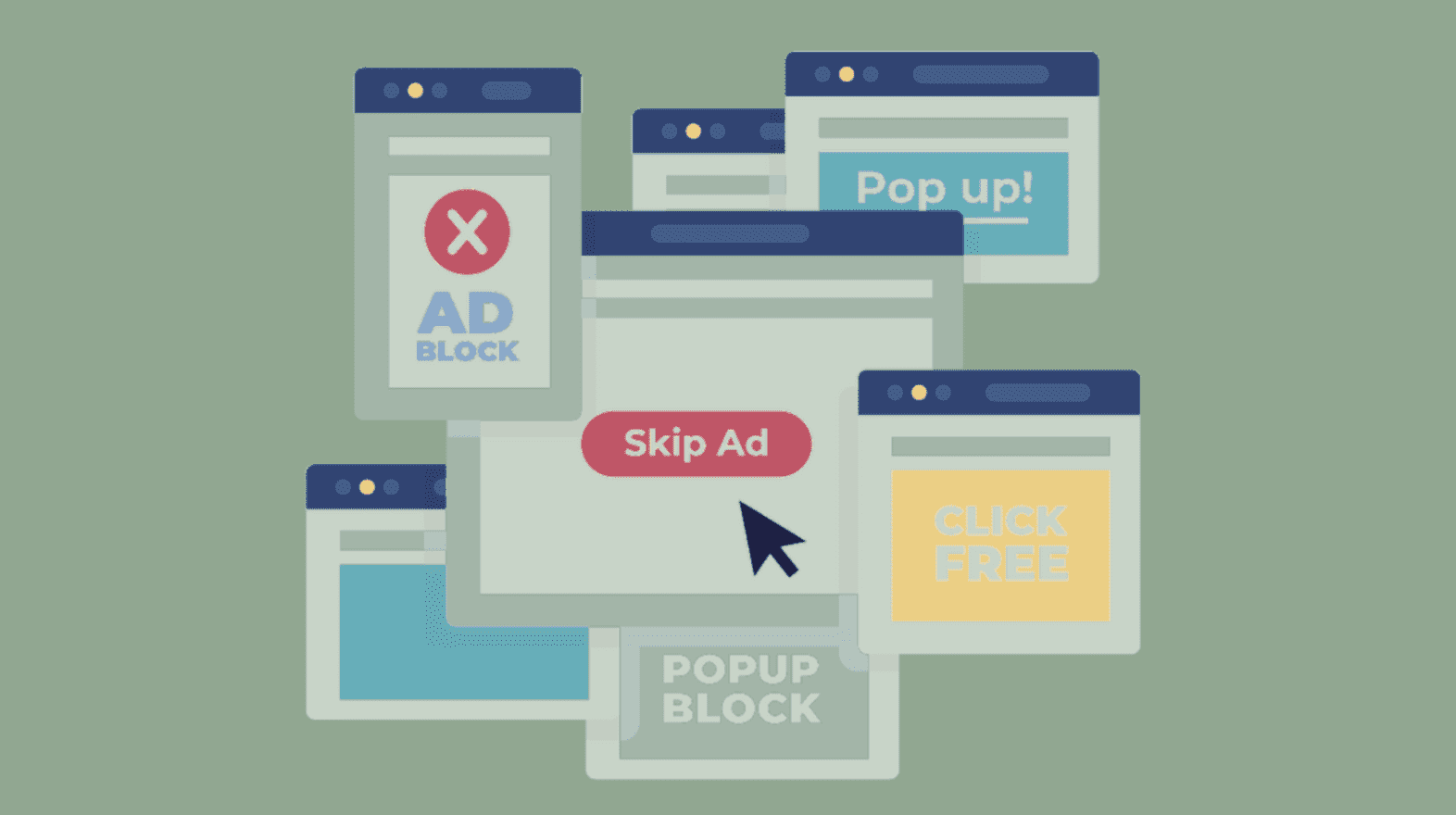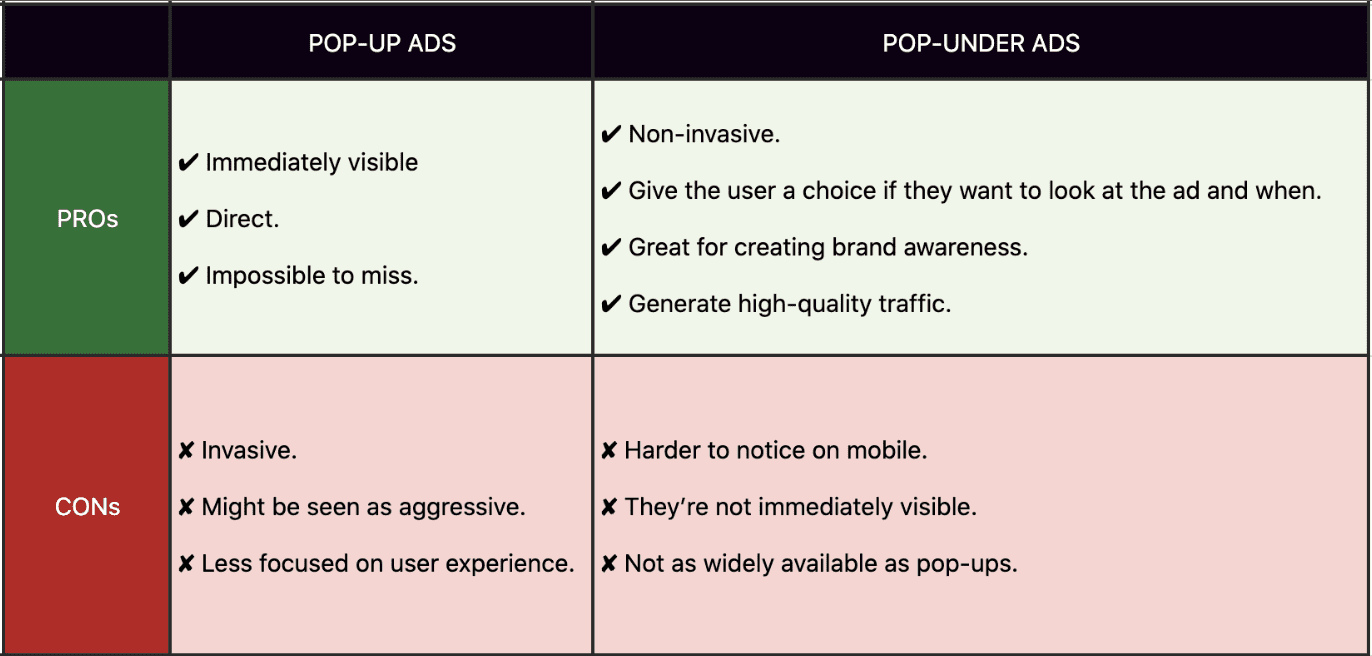
Pop under ads are a form of digital advertising that appear underneath the user’s current browser window, becoming visible only when the user closes or minimizes their active window. While they can be an effective way to capture user attention, they also come with potential drawbacks. This article explores the pros and cons of using pop under ads to help you determine if they are a suitable option for your advertising strategy.
Pros of Using Pop Under Ads
**1. Increased Visibility
Pop under ads offer a unique advantage by remaining hidden until the user closes or minimizes their current window, which can lead to higher visibility when the ad eventually appears.
- Non-Intrusive: Unlike pop-ups or interstitial ads, pop under ads do not interrupt the user’s browsing experience, making them less likely to be immediately closed.
- Delayed Exposure: The delayed appearance of pop under ads can lead to higher engagement, as users may be more inclined to view the ad when they close their current window.
**2. Potential for Higher Click-Through Rates
Due to their non-intrusive nature, pop under ads can sometimes achieve higher click-through rates (CTR) compared to more aggressive ad formats.
- Increased Engagement: Users who are exposed to pop under ads might be more interested in the content, leading to a higher likelihood of interaction.
- Less Annoying: Because they do not interrupt the user’s browsing experience, users may be less likely to view pop under ads negatively.

The Pros and Cons of Using Pop Under Ads
**3. Cost-Effective Advertising
Pop under ads can be a cost-effective option for advertisers, often offering lower costs compared to more prominent ad formats.
- Lower CPM: The cost-per-thousand impressions (CPM) for pop under ads is typically lower, making them an affordable choice for budget-conscious campaigns.
- Higher ROI: Lower costs combined with potentially higher CTR can result in a better return on investment (ROI) for advertisers.
Cons of Using Pop Under Ads
**1. User Experience Concerns
Pop under ads can sometimes negatively impact the user experience, leading to potential dissatisfaction or frustration.
- Annoyance Factor: Users may find pop under ads intrusive, especially if they appear frequently or disrupt their browsing experience.
- Unwanted Distractions: The delayed nature of pop under ads can result in users being annoyed if they forget about the ad or find it irrelevant.
**2. Lower Visibility and Engagement
While pop under ads can be less intrusive, their delayed visibility may also lead to lower engagement compared to other ad formats.
- Delayed Attention: Users may not always notice or engage with pop under ads, especially if they are focused on other tasks or have multiple windows open.
- Reduced Impact: The effectiveness of pop under ads can vary, and they may not capture attention as effectively as more prominent ad formats.
**3. Potential for Ad Blocker Detection
Pop under ads may be more likely to be detected and blocked by ad blockers, reducing their overall effectiveness.
- Ad Blocker Evasion: Users with ad blockers installed may not see pop under ads, limiting the reach and impact of your campaign.
- Compatibility Issues: Different browsers and devices may handle pop under ads differently, leading to inconsistencies in ad delivery.
Best Practices for Using Pop Under Ads
**1. Ensure Relevance and Quality
To maximize the effectiveness of pop under ads, ensure that the content is relevant and of high quality.
- Targeted Content: Use precise targeting to ensure that your pop under ads reach users who are most likely to be interested in your products or services.
- Compelling Creatives: Design engaging and visually appealing ad creatives to capture users’ attention when they view the ad.
**2. Monitor Performance
Regularly monitor the performance of your pop under ad campaigns to assess their effectiveness and make necessary adjustments.
- Analytics: Track key metrics such as CTR, conversion rates, and user engagement to evaluate the success of your pop under ads.
- Optimization: Continuously optimize your campaigns based on performance data to improve results and address any potential issues.
**3. Respect User Preferences
Be mindful of user preferences and avoid overusing pop under ads to prevent potential negative reactions.
- Frequency Capping: Implement frequency capping to limit the number of times users see your pop under ads.
- User Feedback: Pay attention to user feedback and make adjustments to your ad strategy if users express dissatisfaction.
Conclusion
Pop under ads offer a cost-effective and less intrusive alternative to more aggressive ad formats, with potential benefits such as increased visibility and higher click-through rates. However, they also come with drawbacks, including user experience concerns and varying levels of engagement. By understanding both the pros and cons of pop under ads and following best practices, you can effectively incorporate this ad format into your digital advertising strategy and achieve your campaign goals.
